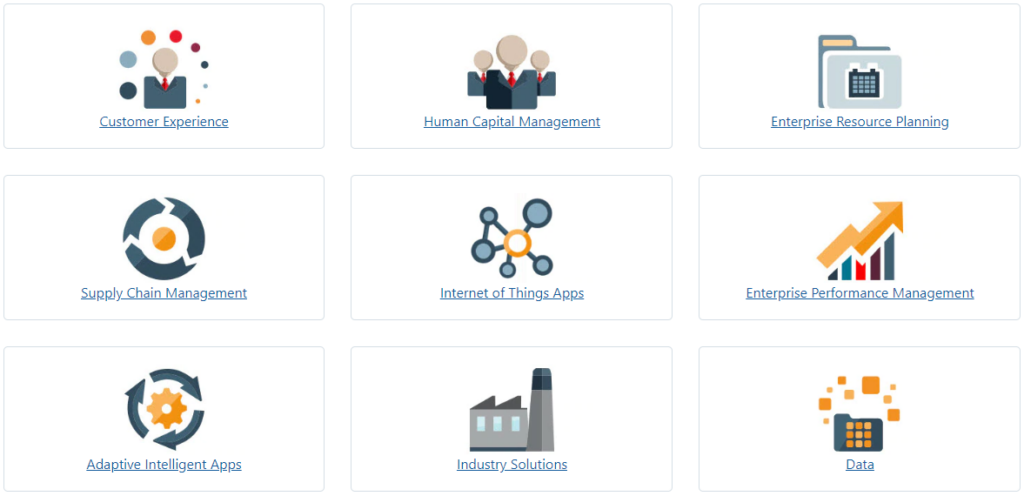Oracle Cloud continues to be a hot topic as companies are drawn to the benefits that come with a Cloud ERP environment, including a reduced burden on infrastructure management. However, in terms of functionality, Cloud is still playing catch-up to the existing features of its on-premise E-Business Suite (EBS) counterpart. As such, Oracle releases quarterly Cloud updates comprised of new functionality, customer enhancement requests and previous release bug-fixes. These updates are mandatory and applied on a scheduled date that is unchangeable once it’s been established.
Whether you are in the middle of your implementation or already using Cloud, understanding the impacts of the latest release on internal business processes is essential to ensuring a seamless update. The following are recommendations to consider prior to your next release update.
- Dedicate Resources to Determine the Release Impact
The first step in preparing for an update is to download and review the New Feature Summaries from Oracle’s Cloud Application Readiness site (cloud.oracle.com/readiness). The releases follow a quarterly schedule and are named sequentially; for example, the 2019 Q1 release is 19A, 2019 Q2 release is 19B, 2020 Q1 release is 20A, etc. Verify that you are downloading the New Feature Summary for the appropriate release period.
Each summary contains information related to both functional module updates, as well as any applicable security role changes. If you’ve explored Oracle’s website, you will have noticed that there is no shortage of documentation to review.

Image Source: oracle.com
Applications will have a New Feature Summary for each module. For example, the Enterprise Resource Planning link includes documentation for the following modules:
- Financials
- Accounting Hub
- Revenue Management
- Project Portfolio Management
- Risk Management
- Procurement
- Adaptive Intelligent Apps
Depending on the size of your organization’s Cloud footprint, it could require reviewing five or more summaries to get the full picture of the potential impact to your business.
Within the feature summaries for each respective Oracle module, you’ll notice that updates can come either enabled or disabled. Features that come enabled are categorized into three buckets:
- Report
- UI or Process-Based: Small Scale
- UI or Process-Based: Large Scale
Features that come disabled require customer action before the feature is deployed for end-users. This exercise requires participation from team members who have the knowledge to review the feature list(s) and understand how each item will affect your organization’s business processes. Not all features will be applicable to all customer processes; however, without a detailed review, companies can be caught unaware when the update is applied to their production environment.
For any Security Role updates, reviewing the Role Information is important as a high-volume of companies choose to customize their user roles. New features that are specific to a role are only applied to the out-of-the-box role and will need to be manually applied to the appropriate customized role, based on your design.
- Rethink the Timing of your Update
As quarterly updates are released to customer environments, bugs are identified that ultimately require the release of subsequent maintenance packs. Organizations should consider taking their update in the second month of the quarter, allowing the issues identified by early adopters to be incorporated into their patch. According to Oracle, customers only have the ability to change their update schedule once.
- Test, Test and Retest
Oracle updates are applied to customer test environments during the first week of the customer’s chosen month, and the production environment during the third week of the month. That allows two full weeks to test the impact of the update in your test environment and identify any major changes. Testing should be performed on core business functionality (i.e., Cutting Purchase Orders, Approval Workflow, etc.), key reports, integrations, and any new features that have been identified as relevant to your organization’s processes.
Considerations for testing Custom Objects (i.e., Reports and Interfaces):
- Oracle will add and drop multiple tables as part of each release. If a custom report leverages tables that have been dropped as part of the new release, those custom reports will need to be updated.
- Oracle will update Web Services and REST API as part of each release. These updates can be tested using SOAP UI or POSTMAN utility to validate any changes to custom interfaces.
- Communicate to End-Users
Organizational Change Management is a critical piece in the success of any implementation, but it should not stop at go-live. As organizations identify update functionality that will have an impact on end-users, communications or learning sessions should be coordinated to provide information to users that may experience application changes. Communications may be company-wide, department-wide, or role-specific, but can provide a reference point for end-users to refer to once the update has been applied in production.
In addition to Feature Summaries, Oracle provides Readiness Training videos and handouts for specific feature updates that can be distributed to end-users.
- Use Updates to Innovate
While there is an effort required to prepare for Oracle upgrades, companies should take advantage of the new features offered and continue to innovate and enhance internal business processes. There is a good chance that process workarounds were implemented during your Cloud implementation due to missing or immature functionality. Companies should use the quarterly upgrades as an opportunity to review any existing workarounds that were implemented and determine where improvements can be made.
In Summary
With Oracle Cloud’s quarterly updates comes additional responsibilities and opportunities for your organization’s ERP teams to manage. Companies that dedicate time and people to performing a detailed review of the update features increase their ability to enhance existing business processes and introduce innovation. Further, a thorough test cycle can limit any unforeseen impacts to production Cloud environments and day-to-day business operations.





